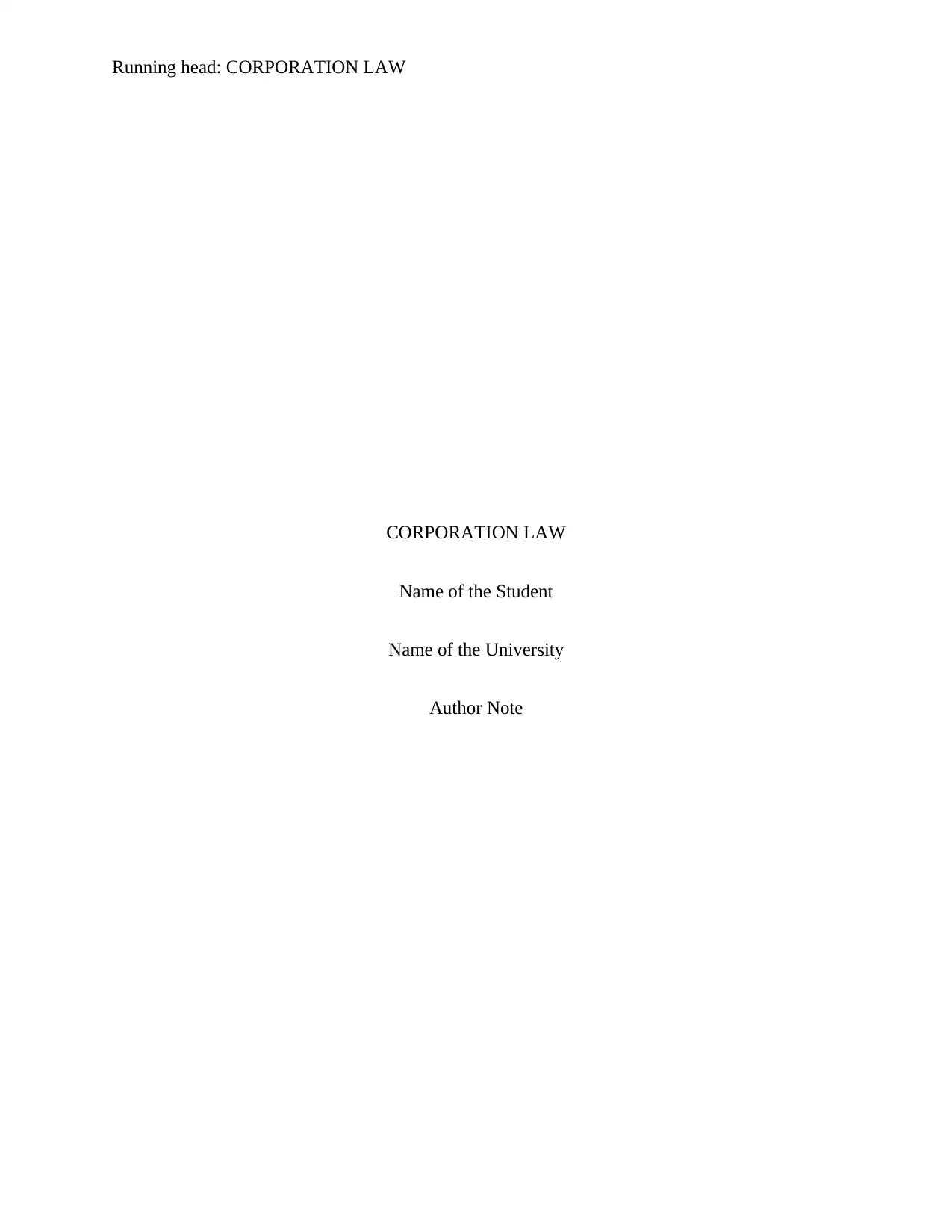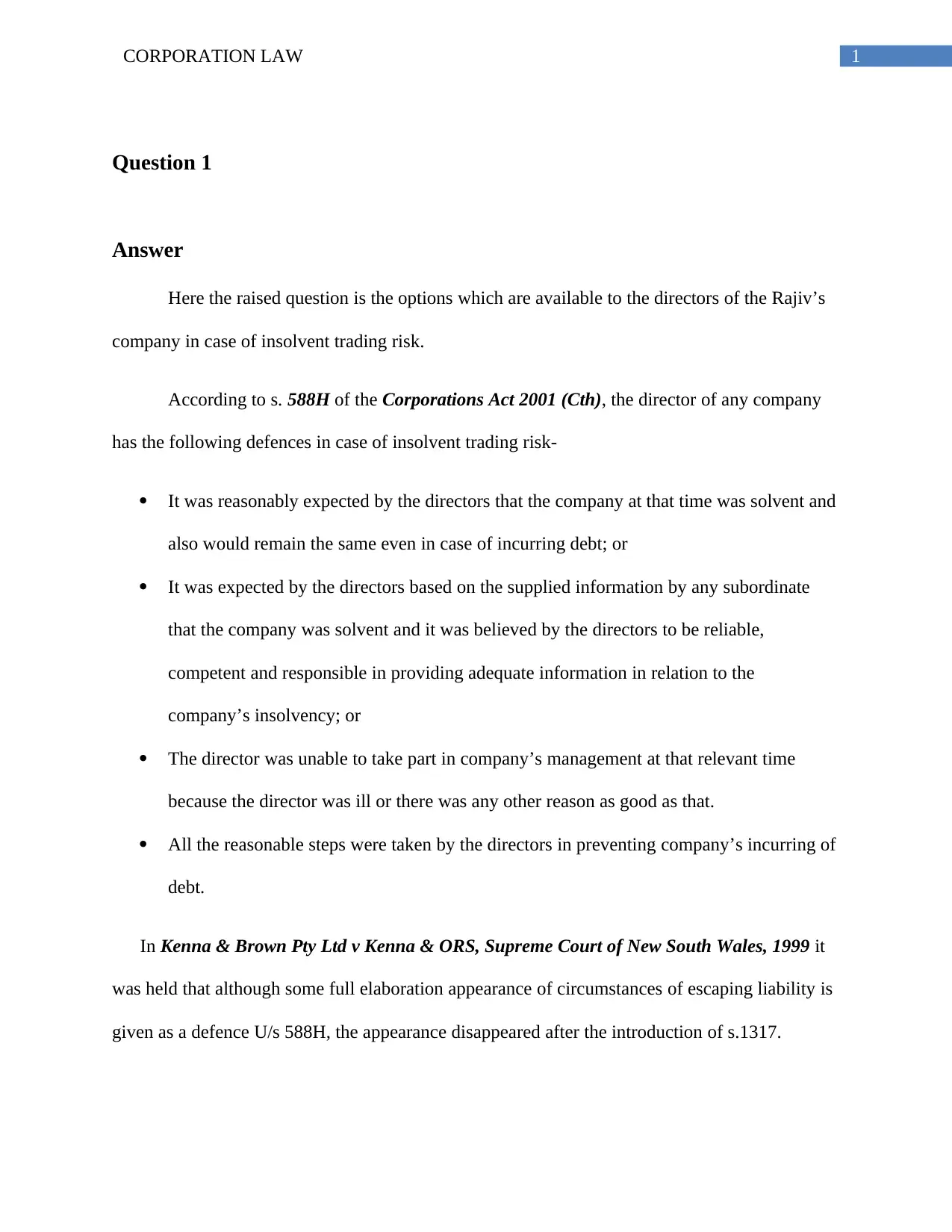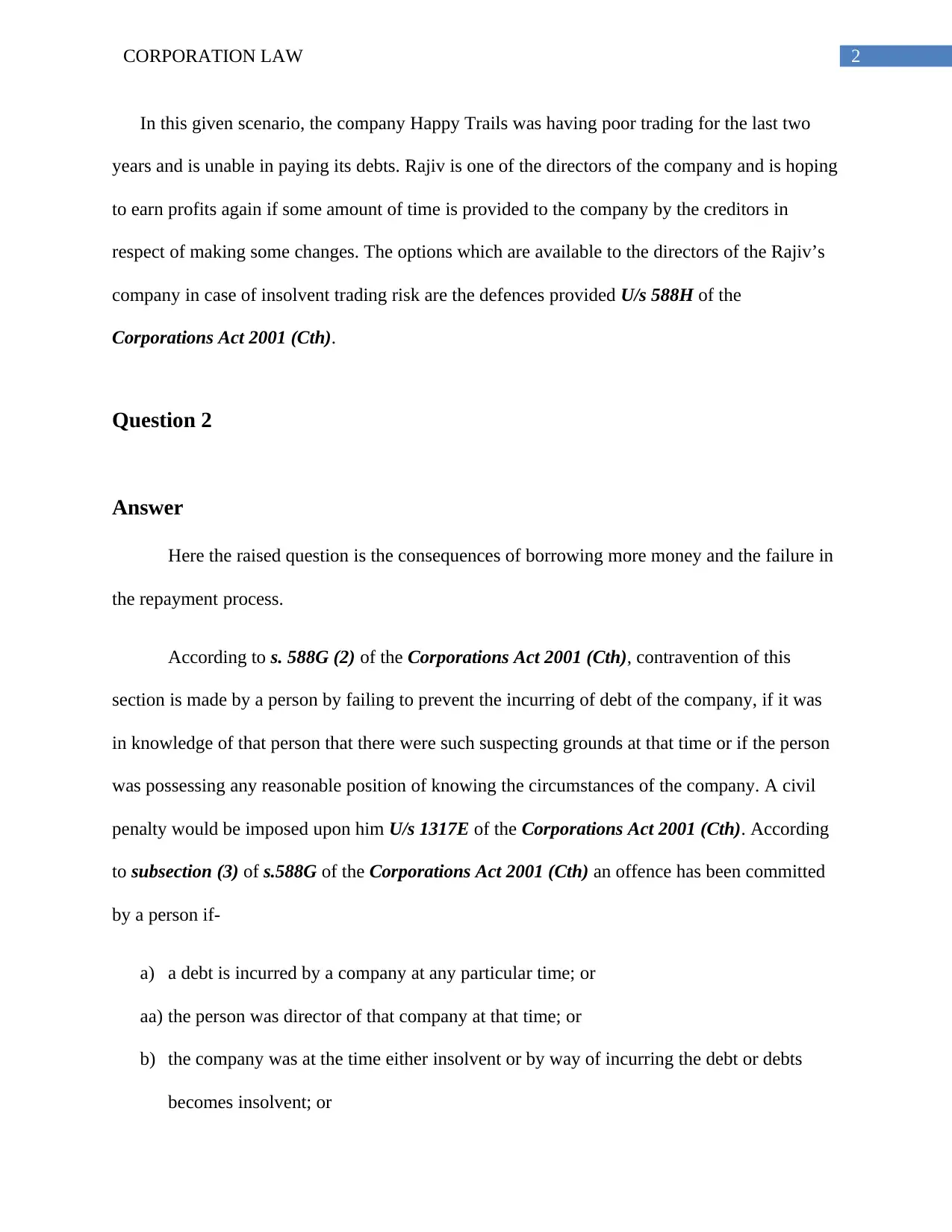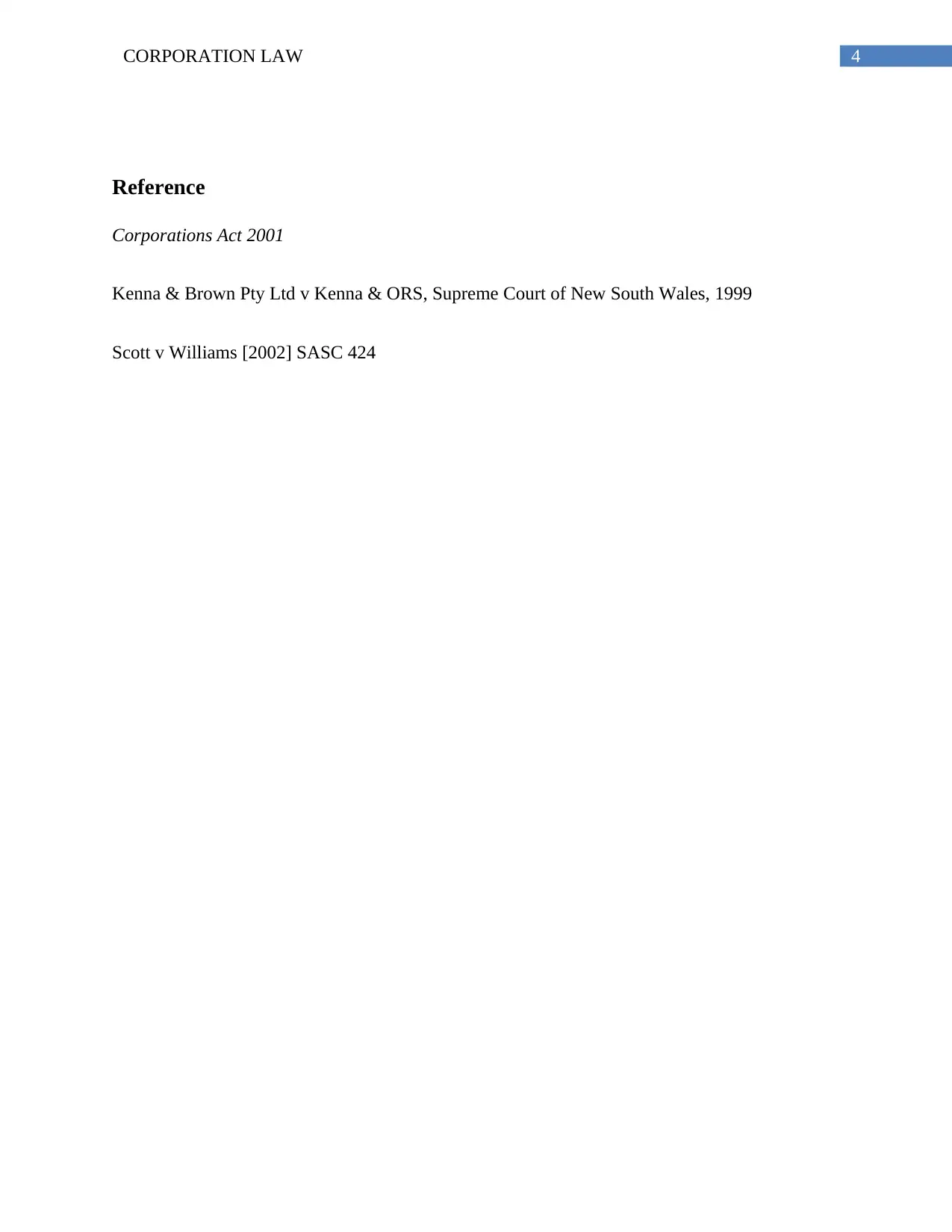Corporation Law Assignment: Insolvent Trading and Director Liability
VerifiedAdded on 2022/12/15
|5
|742
|173
Homework Assignment
AI Summary
This assignment solution addresses key aspects of corporation law, specifically focusing on insolvent trading risks and director liabilities. The solution begins by examining the defenses available to company directors under section 588H of the Corporations Act 2001 (Cth) in cases of insolvent trading, referencing relevant case law such as Kenna & Brown Pty Ltd v Kenna & ORS. The assignment then delves into the consequences of incurring debt and the failure to repay, as outlined in section 588G of the Corporations Act 2001 (Cth), including civil penalties and potential criminal offences. The solution highlights the liabilities of directors, particularly in scenarios where they are aware of a company's insolvency and continue to borrow money. The solution also includes relevant case law like Scott v Williams, and the assignment offers a comprehensive analysis of the legal framework surrounding corporate insolvency and director responsibilities.
1 out of 5












![[object Object]](/_next/static/media/star-bottom.7253800d.svg)